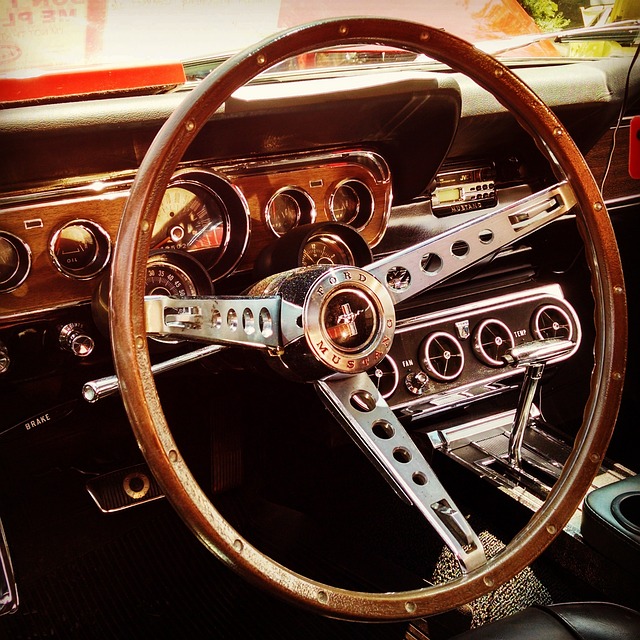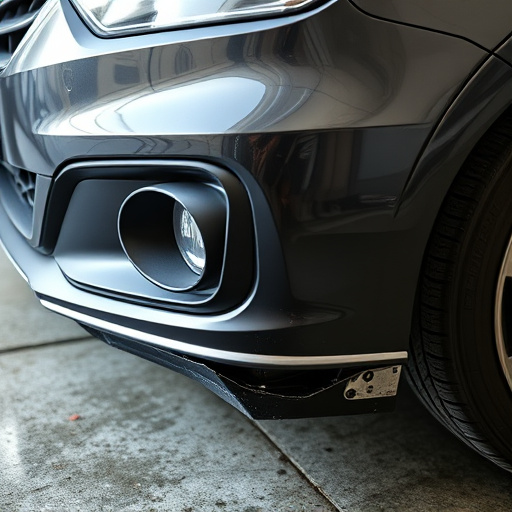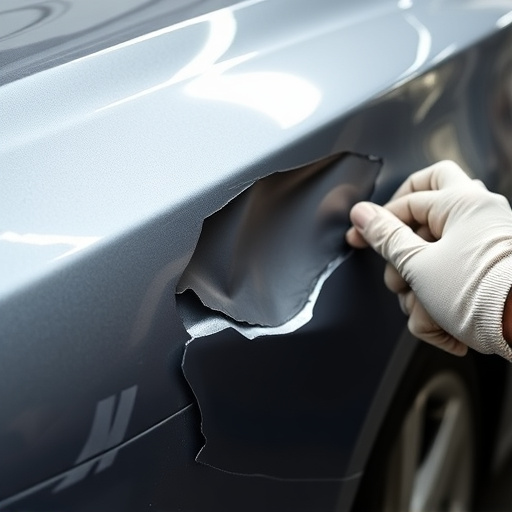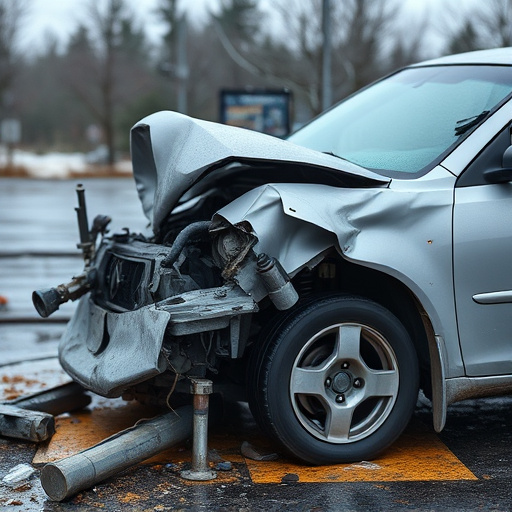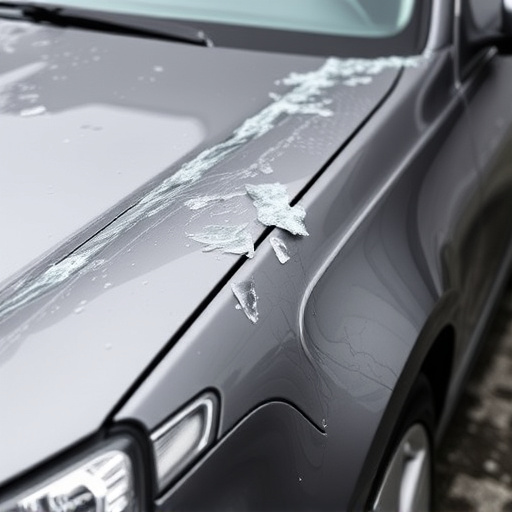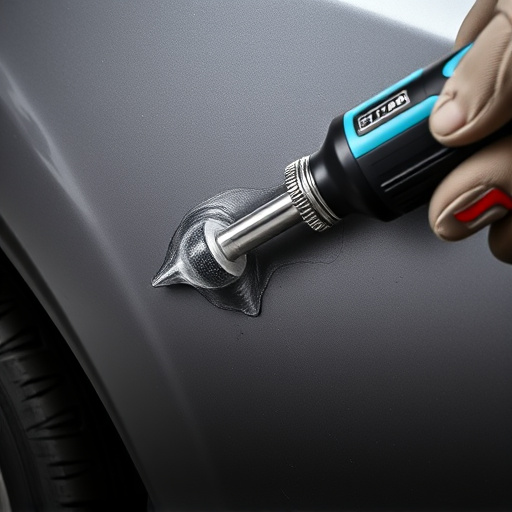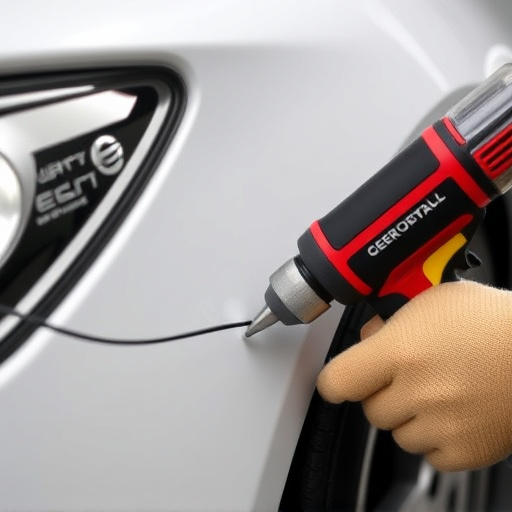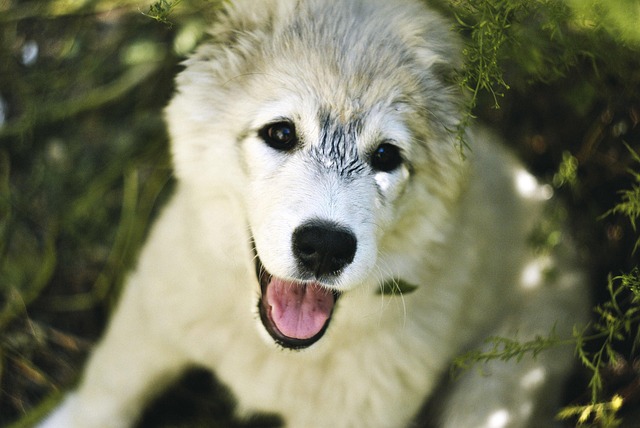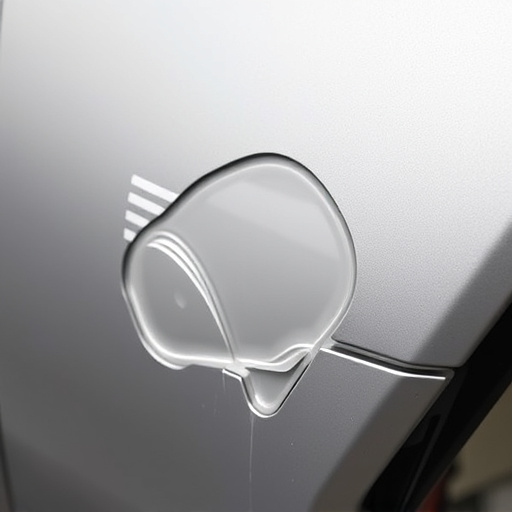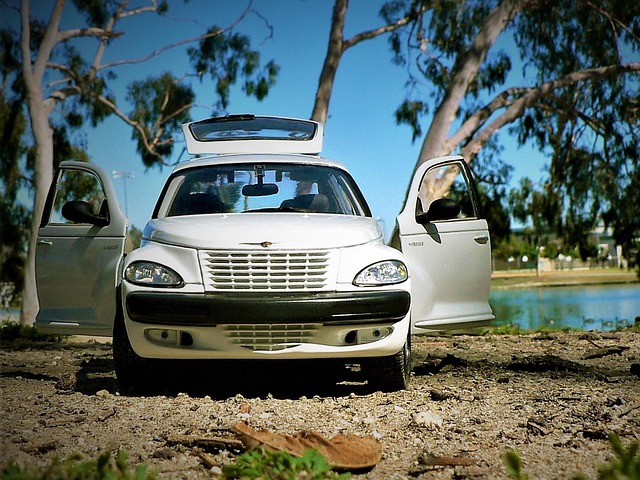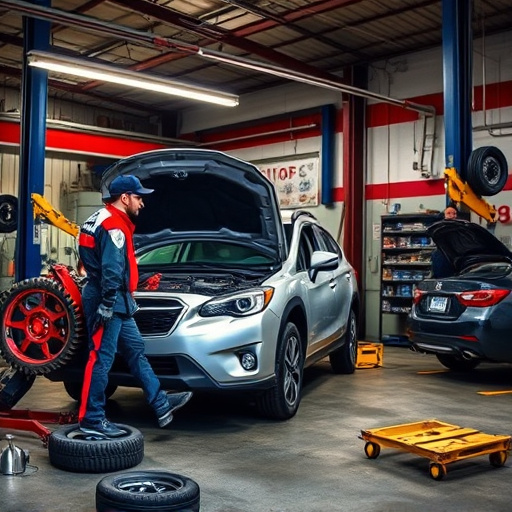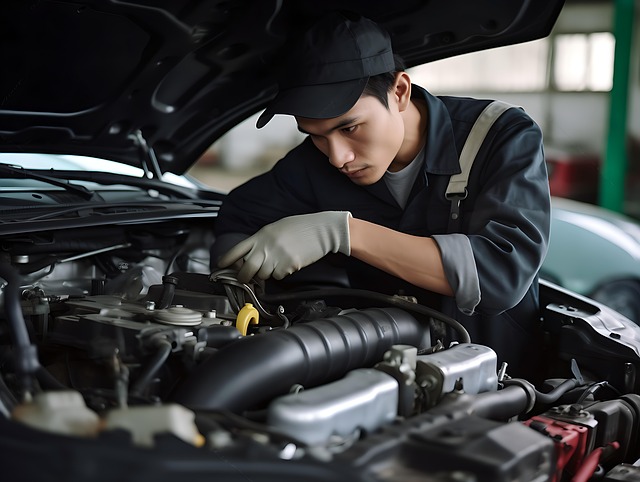Water-based auto paint offers eco-friendly benefits over traditional paints, with reduced emissions, faster drying, superior coverage, and resistance to yellowing. For a successful transition, prepare your workspace, use protective gear, and employ specific painting techniques like proper ventilation, adjusted sprayer settings, and even coat application for professional results that highlight water-based auto paint's durability and shine.
Looking to upgrade your car’s look effortlessly? Consider water-based auto paint—a revolutionary alternative to traditional solvents. This eco-friendly option offers numerous benefits, from reduced toxicity to faster drying times. In this guide, we’ll walk you through the process of transitioning to water-based paint, covering everything from understanding its basics and workspace preparation to application techniques for exceptional results.
- Understanding Water-Based Auto Paint: Benefits and Basics
- Preparing Your Workspace for a Smooth Transition
- Application Techniques and Tips for Optimal Results
Understanding Water-Based Auto Paint: Benefits and Basics

Water-based auto paint is a revolutionary option for vehicle repair services and car paint services, offering numerous benefits that traditional paints cannot match. This type of paint is designed to provide a high-quality finish while being environmentally friendly and easy to work with. One of its key advantages is reduced VOC (volatile organic compound) emissions, making it a popular choice for those concerned about air quality and public health. Moreover, water-based auto paint dries faster than conventional paints, allowing for quicker service times and less down time for your luxury vehicle repair.
The basics of water-based auto paint involve its application using water as the primary solvent instead of toxic chemicals. This makes it safer for both applicators and the environment. It also offers superior coverage and adhesion, ensuring a long-lasting finish that withstands the test of time. Unlike some traditional paints, water-based options do not yellow over time, maintaining the original vibrancy of your vehicle’s color. This durability and aesthetic appeal make it a top choice for car paint services seeking to provide high-quality results while minimizing environmental impact.
Preparing Your Workspace for a Smooth Transition

Before you begin your transition to water-based auto paint, preparing your workspace is crucial. Start by ensuring proper ventilation; open windows or use exhaust fans to clear out any fumes from previous solvent-based paints and create a safe environment for the new, less toxic chemicals. Cover all surfaces with drop cloths to protect them from splatters and drips, including floors, walls, and nearby furniture. This step is essential in maintaining order and avoiding cleanup headaches later.
Next, gather all the necessary tools and materials. You’ll need appropriate protective gear such as gloves, goggles, and a respirator mask. Prepare your work area with a clean, flat surface for mixing and applying the paint. Have all your water-based auto paint products readily accessible, along with the recommended thinners or diluents for proper application. A well-organized workspace will make the transition smoother, making it easier to focus on the task at hand—upgrading to safer, more eco-friendly water-based car paint services.
Application Techniques and Tips for Optimal Results

When upgrading to water-based auto paint, understanding application techniques is key for achieving optimal results. Unlike traditional solvent-based paints, water-based formulas require a slightly different approach. First, ensure your workspace is well-ventilated and wear protective gear, including gloves and a respirator, as these paints can emit strong fumes. Use a low-speed, high-RPM sprayer with adjustable settings to achieve a fine mist. This technique allows for better control over the paint’s distribution, minimizing overspray and ensuring even coverage.
For the best finish, start by priming the surface thoroughly to seal any pores and imperfections. Then, apply the water-based paint in thin, even coats, allowing each layer to dry slightly before adding the next. This process helps prevent running or pooling, resulting in a smooth, professional appearance. Remember to maintain a consistent distance from the surface and use short, controlled strokes for precise control over the paint flow. Finally, allow the final coat to cure completely according to the manufacturer’s instructions, enhancing the water-based auto paint’s durability and long-lasting shine.
Upgrading to water-based auto paint is an accessible and rewarding process that offers numerous environmental and performance benefits. By understanding the fundamentals, preparing your workspace adequately, and mastering application techniques, you can achieve professional results while contributing to a more sustainable future. Embrace this eco-friendly approach and enjoy the satisfaction of using cleaner, safer, and more efficient automotive finishes.

